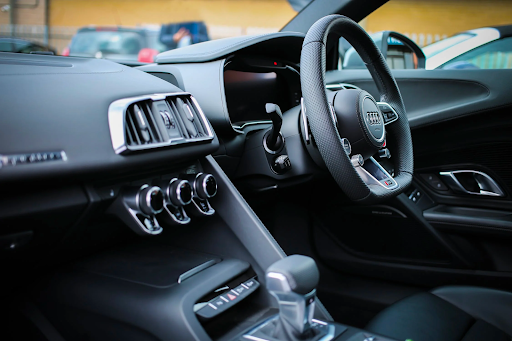The automotive industry is constantly evolving, with manufacturers striving to enhance vehicle performance, comfort, and safety. Amidst this pursuit, rubber parts have emerged as a crucial component in the design and functionality of modern automobiles. From engine mounts and seals to hoses and gaskets, rubber parts offer numerous advantages that contribute to the overall efficiency and reliability of vehicles.
We will delve into the key benefits that make rubber an indispensable material, including vibration dampening and noise reduction, flexibility and resilience, heat and chemical resistance, electrical insulation, and weight reduction for improved fuel efficiency. Understanding the unique properties of rubber and how they enhance automotive applications will not only shed light on the importance of these components but also provide insights into the ongoing advancements within the industry.

Vibration Dampening and Noise Reduction
Rubber parts excel in vibration dampening, significantly reducing noise and vibrations within vehicles. Engine mounts, suspension bushings, and anti-vibration pads made of rubber absorb and isolate vibrations generated by the engine, uneven road surfaces, and other sources, resulting in a smoother and quieter ride. This exceptional dampening capability enhances the driving experience by providing a comfortable and peaceful environment for both the driver and passengers, while also improving overall vehicle stability and reducing wear and tear on other components.
Flexibility and Resilience
Rubber parts offer exceptional flexibility and resilience, enabling them to withstand dynamic loads and harsh environmental conditions. Parts like a rubber seal, a rubber gasket, and hoses are highly flexible, allowing them to maintain a secure and reliable seal under different movements and pressures, ensuring optimal performance of critical automotive systems. They effectively accommodate thermal expansion and contraction, making them suitable for extreme temperature variations and preventing leaks and failures.
Moreover, the inherent elasticity of rubber contributes to improved impact resistance and durability, effectively protecting components from damage caused by road debris, potholes, and other external factors, thus extending the lifespan of various parts.
Heat and Chemical Resistance
Rubber parts possess remarkable heat and chemical resistance, making them ideal for demanding automotive applications. They can withstand high temperatures without degradation, ensuring the efficient operation of cooling systems and engine compartments, even in extreme conditions. Additionally, they exhibit excellent resistance to chemicals, oils, and fluids commonly encountered in automotive environments, effectively preventing degradation and leaks that could lead to system failures. This outstanding chemical resistance extends the lifespan of rubber parts, minimizing the need for frequent replacements and resulting in cost savings for vehicle owners.
Furthermore, the resistance to harsh chemicals ensures the integrity of automotive systems, promoting safety and reliability.
Electrical Insulation
Rubber is an exceptional electrical insulator, a critical attribute in the electrical-intensive automotive industry. Rubber parts such as electrical connectors, wiring harnesses, and insulating boots provide crucial protection for electrical circuits against moisture, dust, and other contaminants, ensuring reliable and safe operation. This safeguard prevents short circuits, which could result in system malfunctions or even vehicle fires, enhancing the overall safety of the vehicle.
Rubber’s dielectric properties also play a vital role in electrical safety by isolating and preventing the flow of electric current to unintended areas, reducing the risk of electrical hazards, and providing peace of mind to vehicle occupants.
Weight Reduction and Fuel Efficiency
Rubber parts contribute to weight reduction in vehicles, offering a lightweight alternative to their metal counterparts. By replacing heavy metal components with rubber counterparts, such as engine mounts and suspension bushings, significant weight savings can be achieved without compromising performance or safety. Reduced vehicle weight translates into improved fuel efficiency, as lighter vehicles require less energy to accelerate and maintain speed, resulting in cost savings at the pump and reduced carbon emissions.
Furthermore, the inherent flexibility and shock absorption properties of rubber contribute to smoother rides, reducing the strain on other vehicle components and further enhancing fuel efficiency. Embracing rubber parts not only promotes sustainability but also aligns with the automotive industry’s ongoing efforts to enhance fuel efficiency and reduce the environmental impact of vehicles.

Rubber parts have proven to be invaluable in the automotive industry, offering a multitude of advantages that enhance vehicle performance, durability, and safety. From their exceptional vibration-dampening and noise reduction capabilities to their flexibility, resilience, and resistance to heat, chemicals, and electricity, rubber parts provide essential functions in various automotive systems. Furthermore, their contribution to weight reduction promotes fuel efficiency and sustainability, aligning with the industry’s ongoing efforts to reduce carbon emissions.
By embracing the advantages of rubber parts, manufacturers can design and produce vehicles that offer superior comfort, performance, and safety. As the automotive industry evolves, rubber parts will remain an essential component, driving innovation and enhancing the overall driving experience for years to come.
Interesting Related Article: “How AI Is Shaping The Future Of Automotive Technology And What To Expect In The Coming Years“

